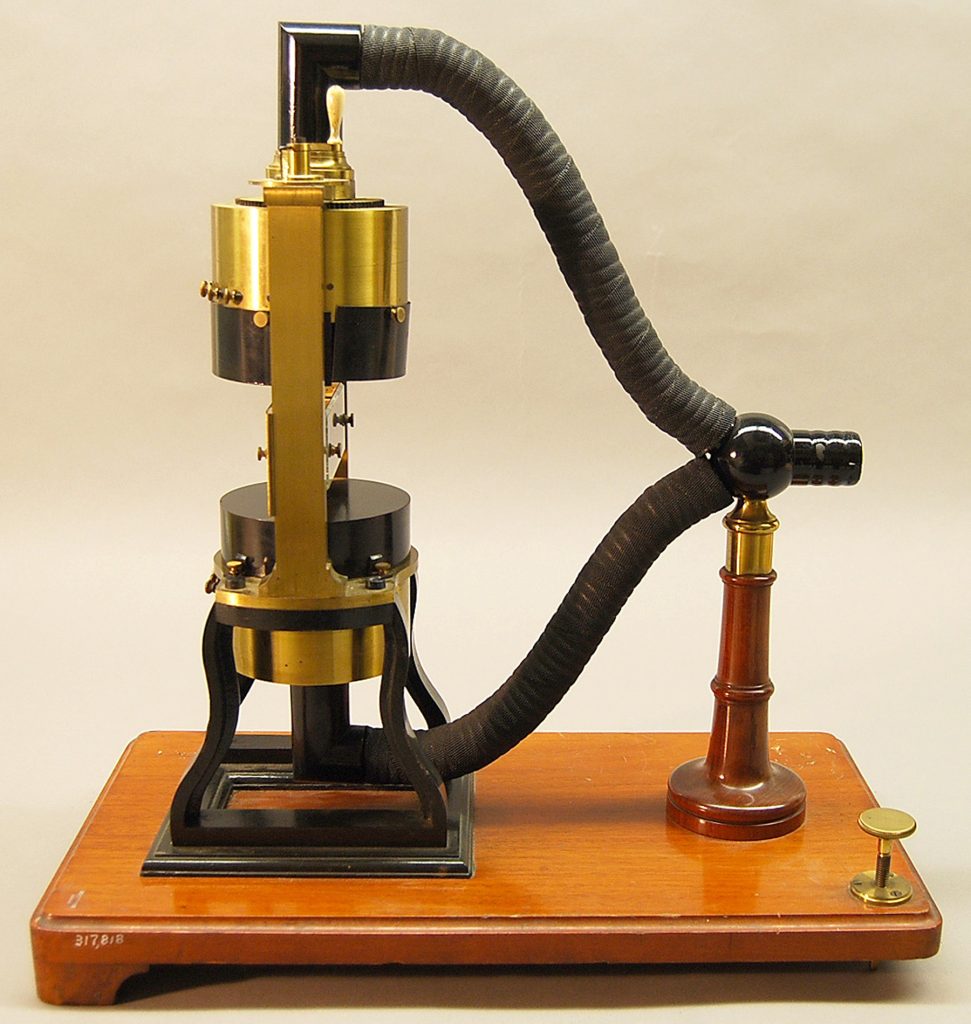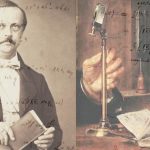Artefacts
Helmholtz’s double siren
Helmholtz’s double siren
In 1862, the German scientist Herman Helmholtz invented another important acoustic instrument, the double siren. The new instrument combined two Dove Sirens, which were positioned to face each other and coupled on the same shaft. Both sirens were also connected to the same air supply, which made it possible to produce a variety of frequencies, all of which would slide up or down the scale as the air pressure was increased or decreased.
The two sirens in this instrument were similar, but not identical. The upper disk had four rings of holes, with 9, 12, 15 and 16 holes respectively. The lower disk also had four rows, but with 8, 10, 12 and 18 holes. The lower siren was rigidly fixed in place, but the upper one had a small crank on the top which allowed it to be rotated. This created “phase effects” between the two sirens and was useful for studying interference effects. Helmholtz also added small brass resonators to each siren. These covered the disks and were intended to reduce the harmonics and produce a more pure tone. Helmholtz described the sound of his instrument as being “full, strong and soft, like a fine tone on the French horn.”
Source:
Steven Turner; Curator, Physical Sciences, National Museum of American History, Smithsonian Institution.
© 2015 – 2025 Humboldt-Universität zu Berlin







